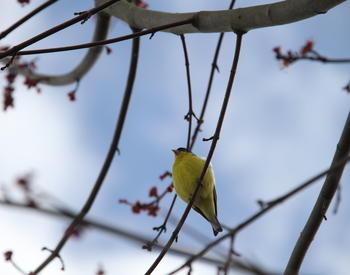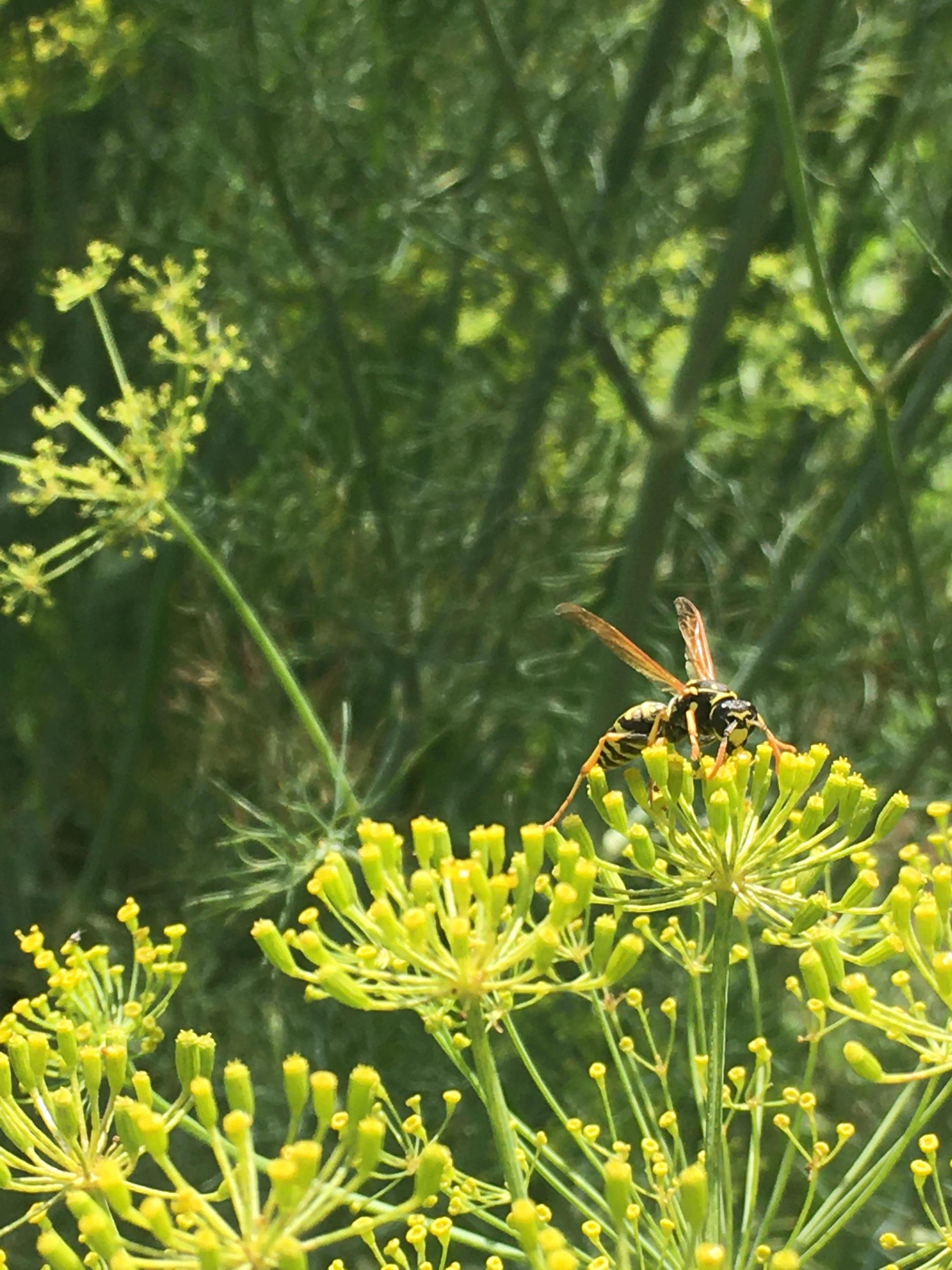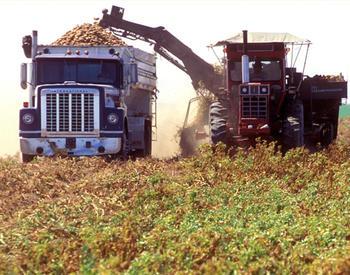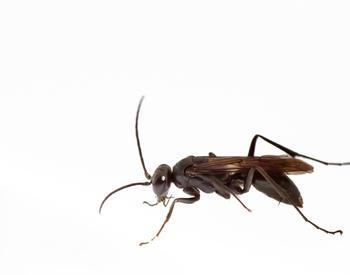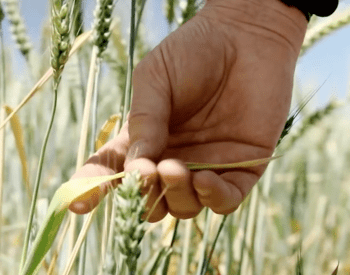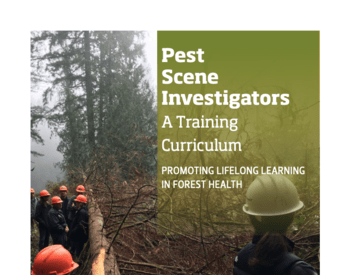Intent
It's worth knowing that whenever a lone yellow jacket is foraging for insects, its focus is on the job at hand rather than on stinging someone. Nasty encounters are unlikely if people don't wear floral prints or use any fragrances. Most stings from individual yellow jackets result from accidental encounters, or when a person swats at one.
When a group of yellow jackets attacks, it's the workers job to guard the opening to the nest. The guards rush out when they sense abnormal vibrations such as foot steps or a mower. The unfortunate target may be stung many times, in part because individual yellow jackets can sting repeatedly.
Although some people are allergic to the venom, it is good to know that the sensitivity doesn't necessarily cross over to reactions with bee venom.
Nests
Nests are of two sorts, either above ground or below. Ground nests are usually in a hole previously occupied by a small animal. It is enlarged as the colony gains more members. Aerial nests may be in a bush or shrub, suspended from the eaves, or in a wall void. A word of warning if the nest is in a wall void. Don't close the opening because yellow jackets are efficient chewers which can make their way through plaster, wall board, and even exterior plywood. The problem is that you don't know whether they will go outdoors or indoors.
Life Cycle
Yellow jackets are beneficial in that they collect other kinds of insects to feed their young. It is comforting to many to know that the colony's inhabitants will die at the end of the year, the old nest is permanently abandoned and disintegrates. Only the mated queens survive the winter in a protected site such as siding or wood piles.
The cycle continues when, come spring, each surviving queen begins a new nest in a new site, lays 25 or so eggs, and raises the first group of workers, usually in June. When these first workers mature, the queen will become an egg-laying machine that never leaves the nest for the rest of her life. If you want to use traps, they are effective only while the colony is young and still weak.
Recommendations
OSU does not suggest killing yellow jackets unless they pose a hazard to humans. If you must treat, you can hire a professional to remove the nest. If you decide to do it yourself, use a long-distance aerosol labeled for yellow jackets or treat a ground nest with boiling water. Both should be done at night.
An effective low-tech option for protection against foraging yellow jackets while you are outdoors is to lure them away by providing a can of kitty tuna or canned chicken at a good distance from your activities.
Bald-face hornets are another type of "jacket", but tend to be less aggressive in general. They are mostly black and white.
